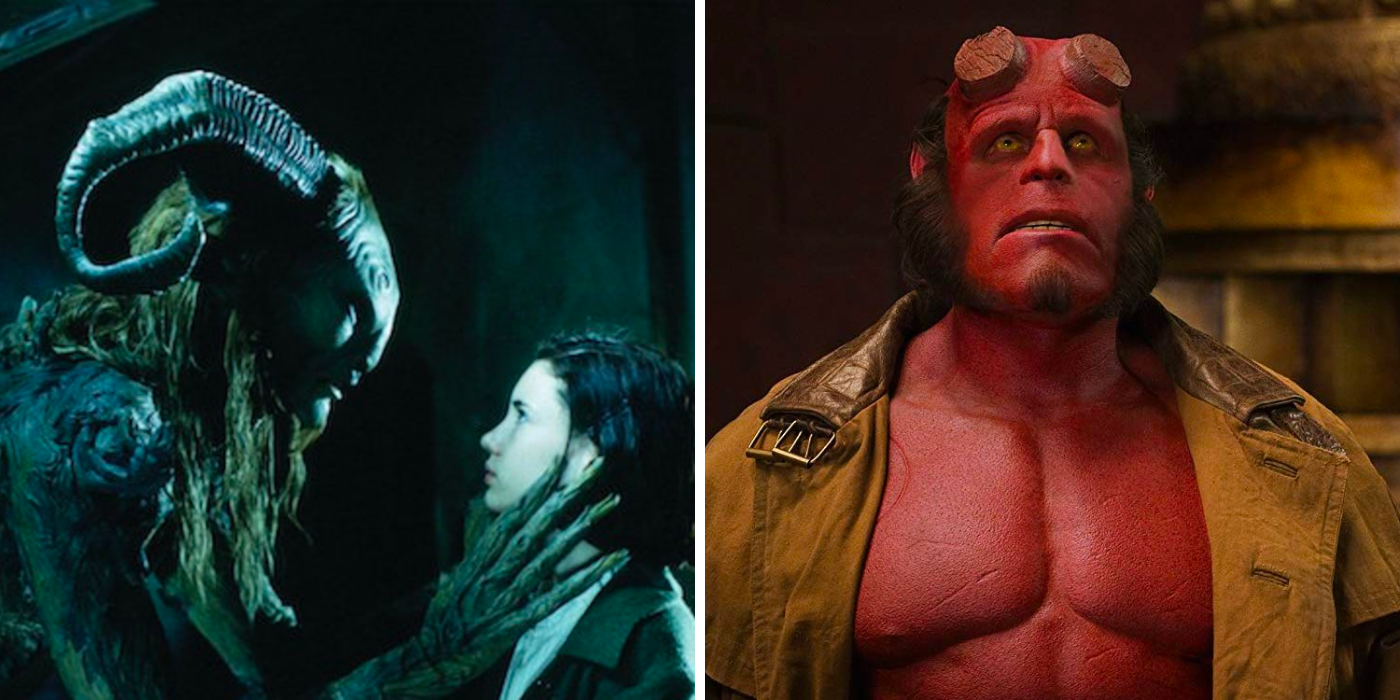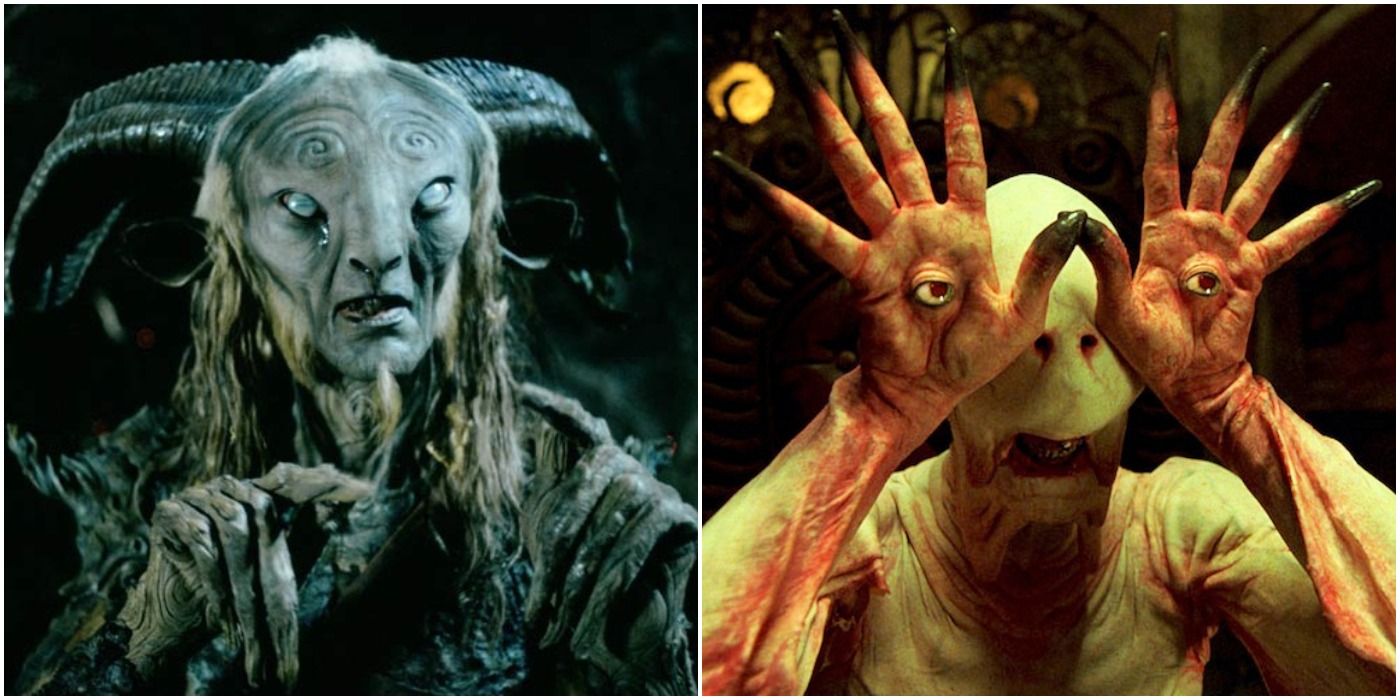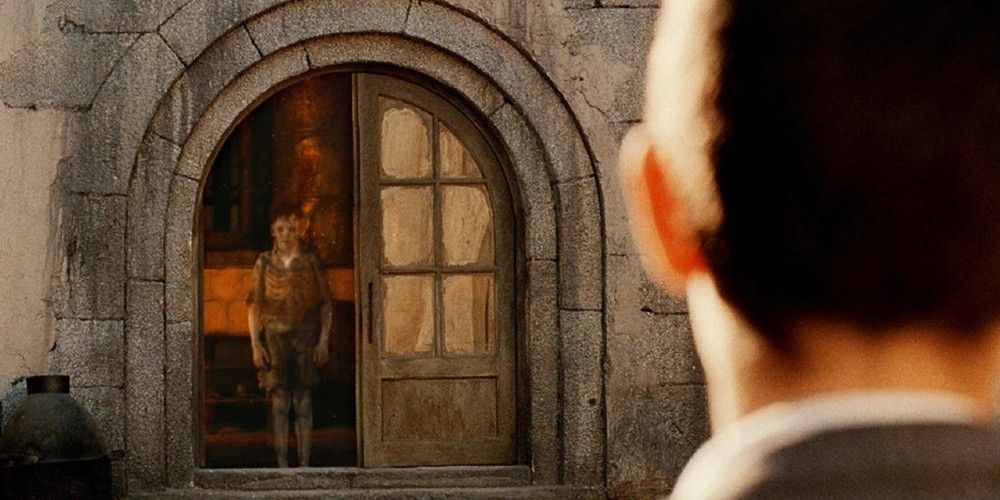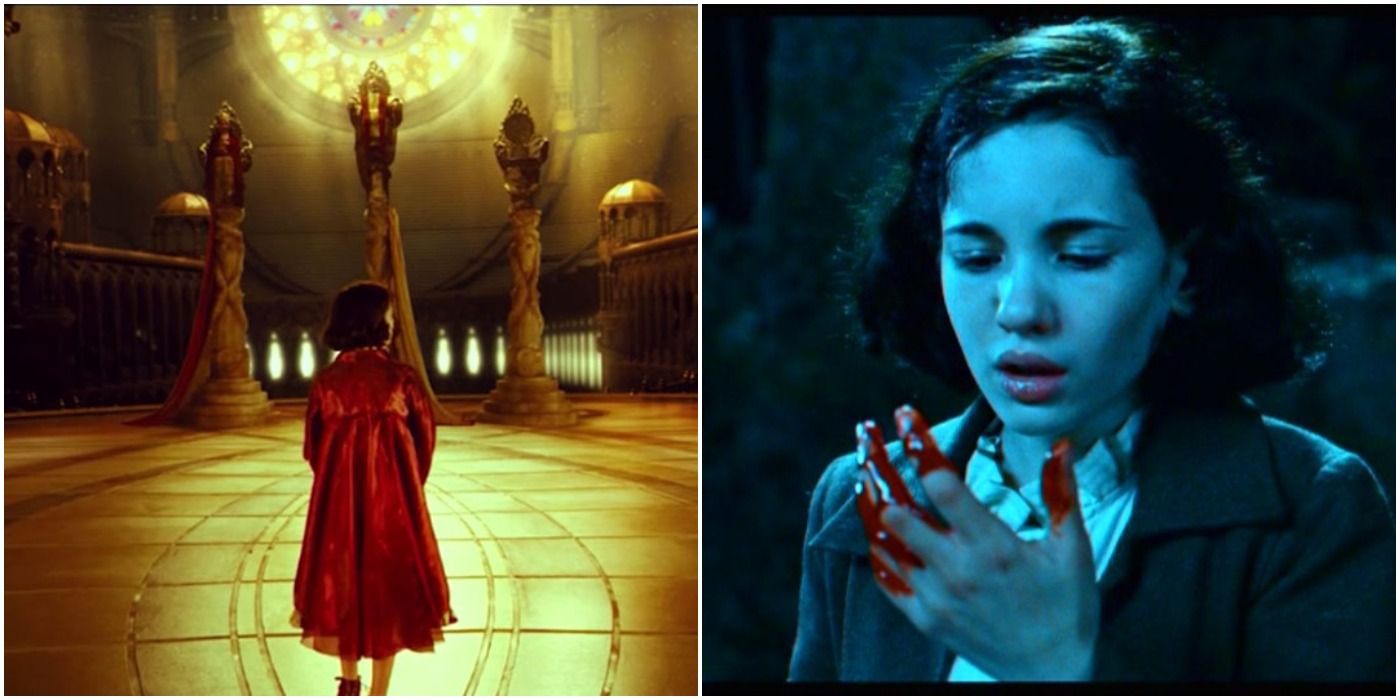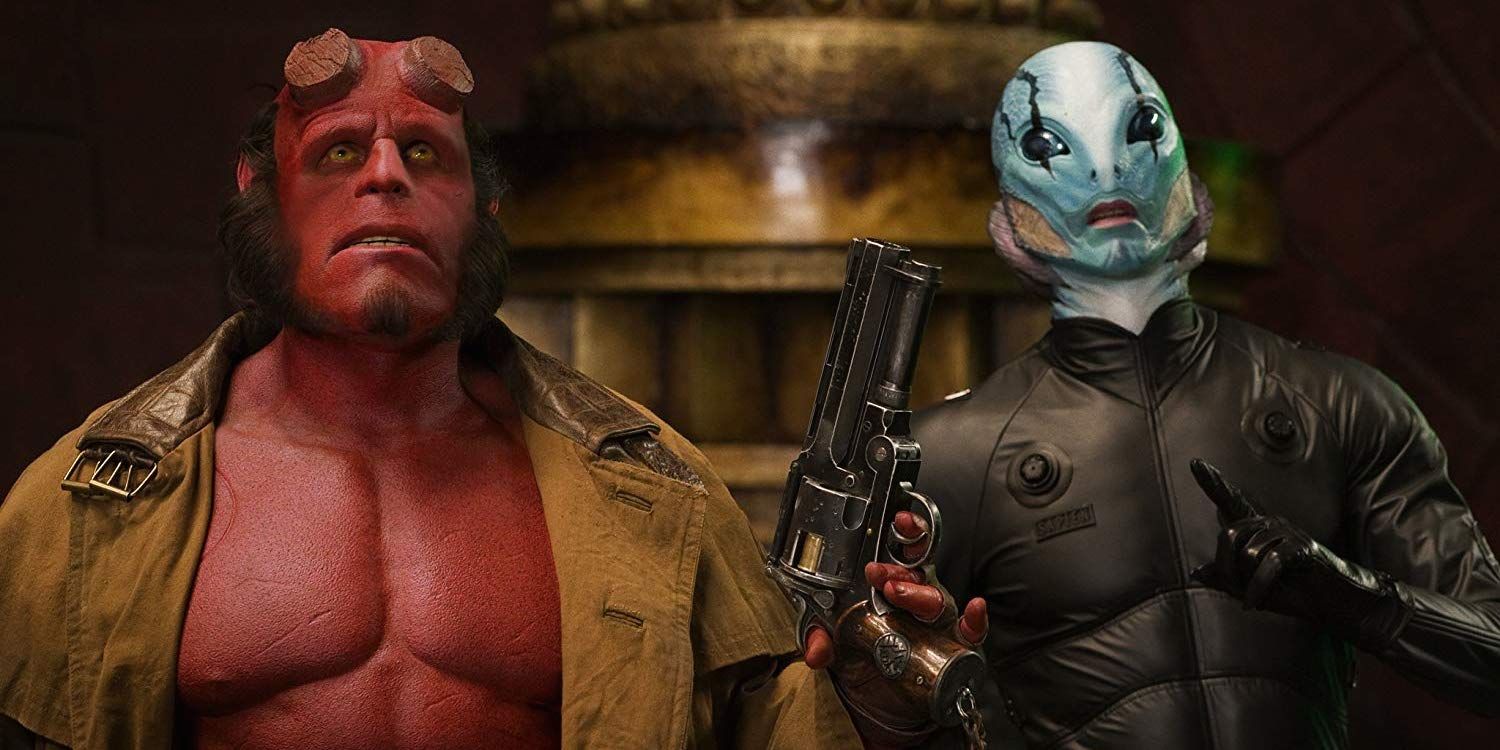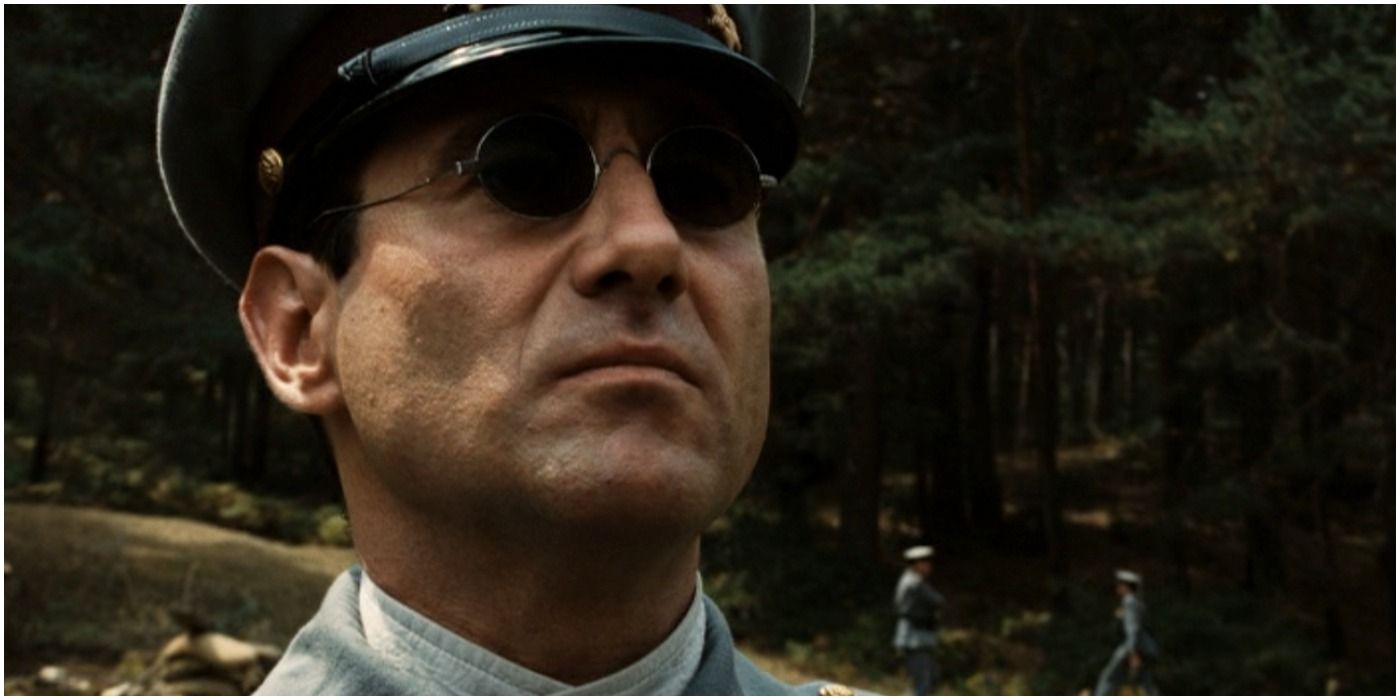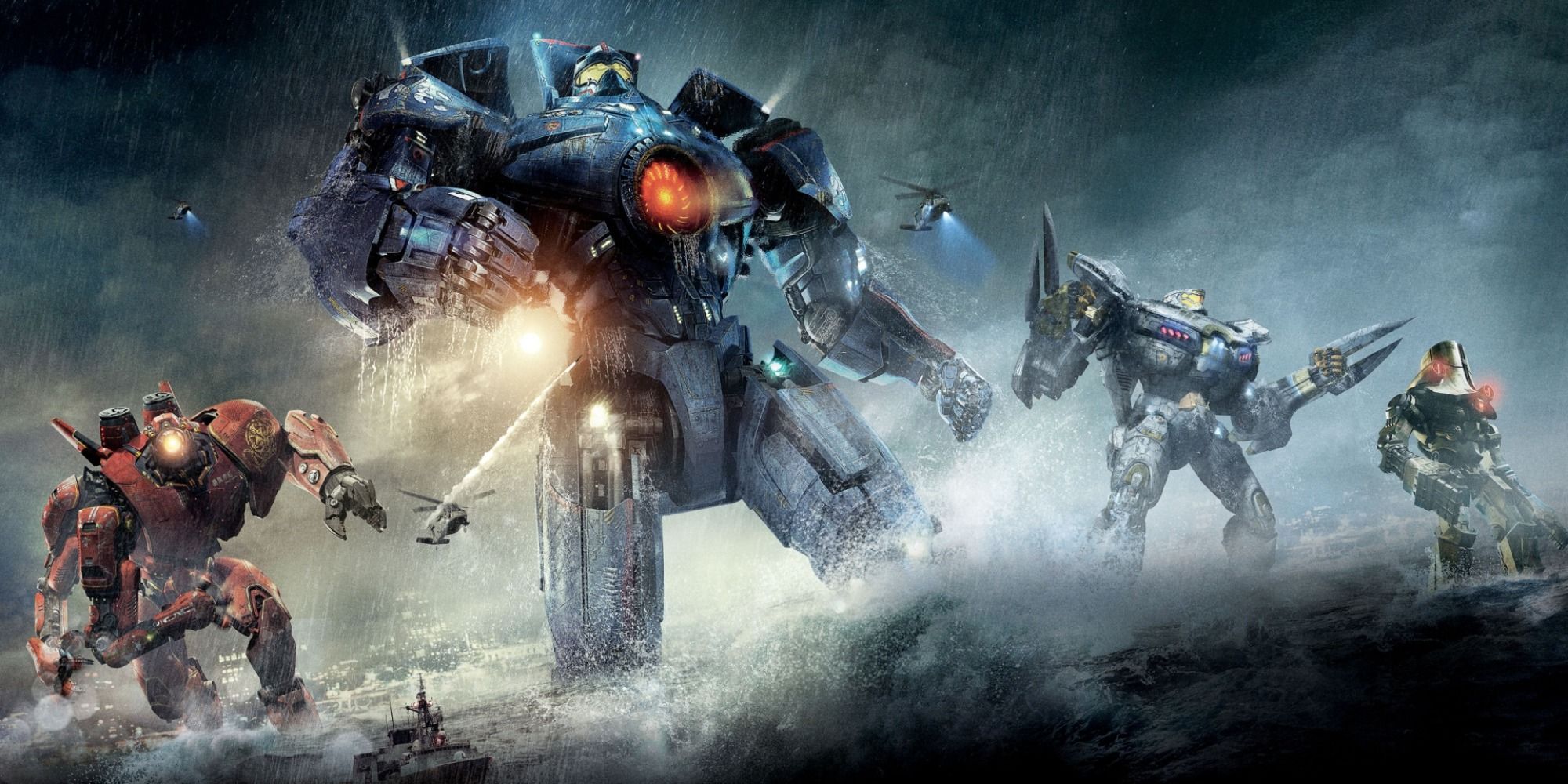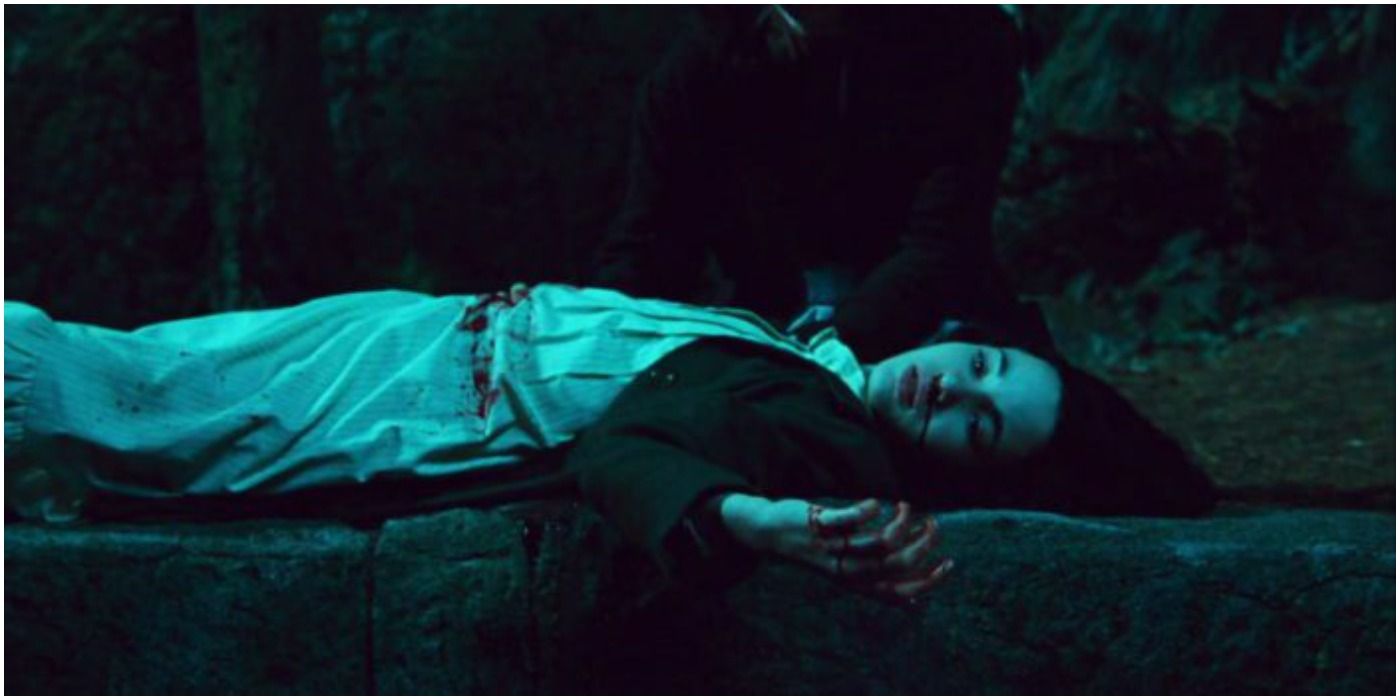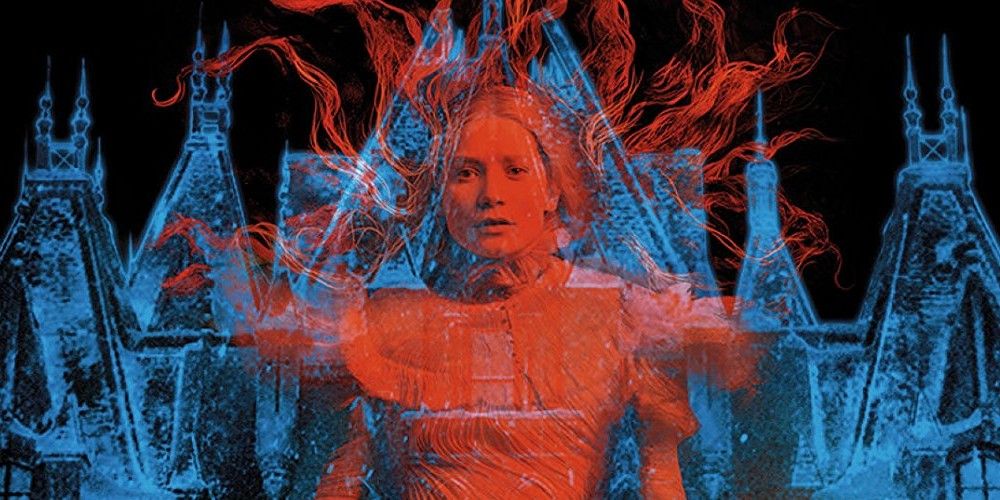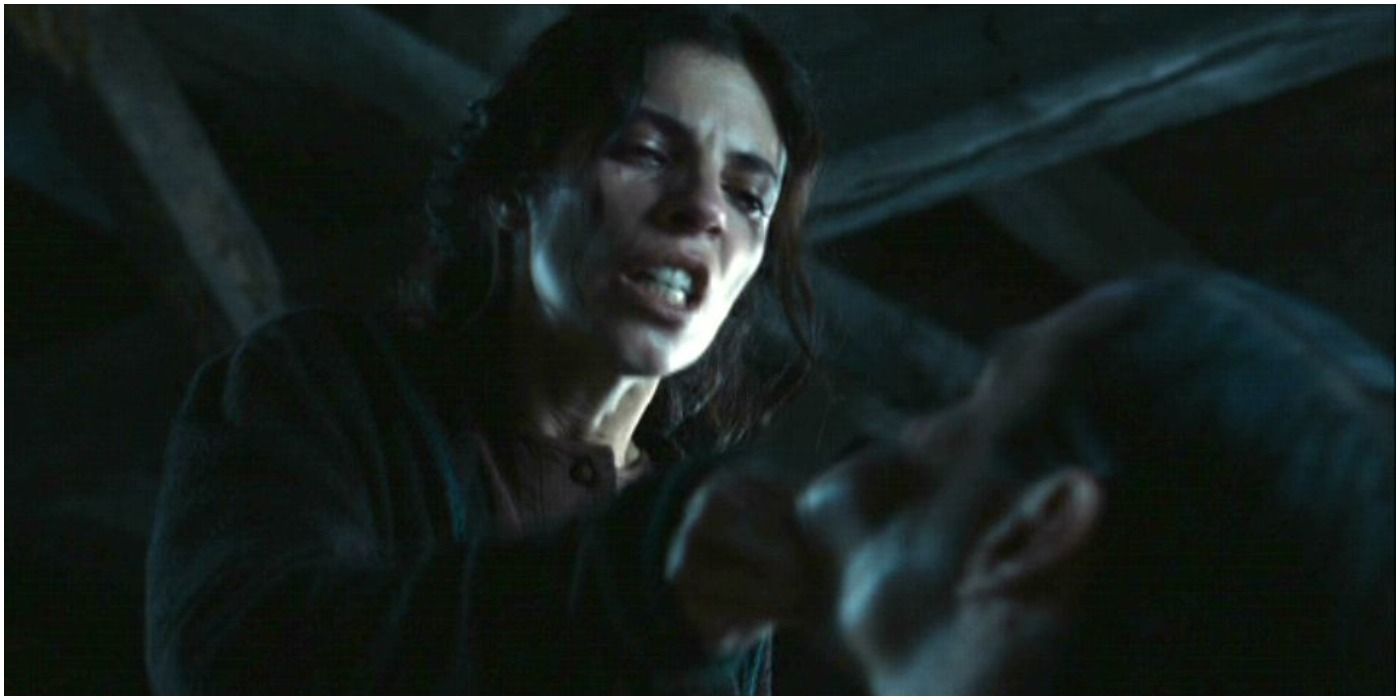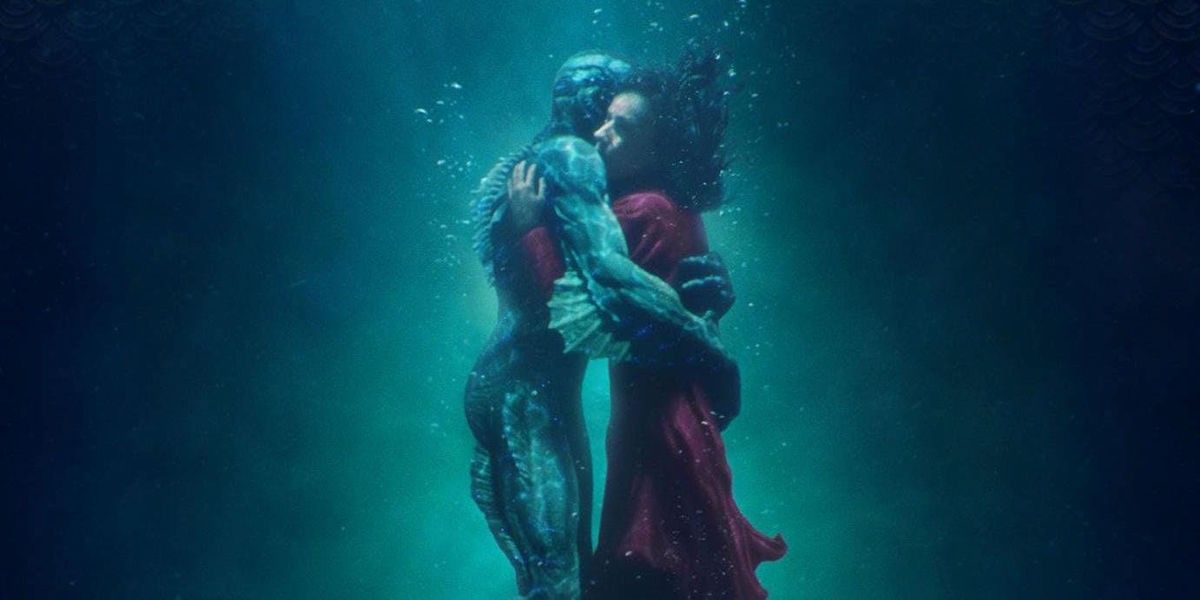Guillermo del Toro is one of the best working filmmakers. His films have common motifs, but all feel spectacularly unique. Del Toro's masterpiece is 2006's Pan's Labyrinth, about a young girl named Ofelia using fantasy to escape the harsh realities of her life in Francoist Spain.
Del Toro is anything but a one-hit-wonder. Plenty of his other films come close to Pan's quality, and in some areas even might surpass it.
10 Pan's Labyrinth Has Majestic Monster Designs
Watching his films, one gets the sense that del Toro has a greater fondness for monsters than men. His films are populated by humanoid yet otherworldly creatures, usually played by his regular collaborator, Doug Jones. In Pan's Labyrinth, Jones has two such roles. The first, the Faun, is the most expressive of all del Toro's monsters. Between his green-brown coloration and bark-like skin, he resembles a piece of the Earth itself made animated. In a great attention to detail, he also grows less and less emancipated as the film goes on and Ofelia approaches her destiny.
Jones' other role is the Pale Man. The monster is only in one scene, but it's a spine-chilling one; Jones' jerky movements alone make it clear the "man" is anything but. Haggard and wrinkled with eyes lodged in his hands, the Pale Man represents enduring political evils.
9 The Devil's Backbone Is A Blueprint For Pan's Labyrinth
In 2001, five years before Pan's Labyrinth, del Toro made another film set during the Spanish Civil War, The Devil's Backbone. The film is set in an orphanage for war orphans, run by Spanish Republican loyalists.
While Pan's is a dark fantasy film, Devil's Backbone finds del Toro working in another of his favorite genres, the Gothic. Carlos (Fernando Tieve), the main orphan who the film focuses on, discovers the orphanage is haunted, but it becomes apparent that phantom is not the true malevolence in the film.
8 Pan's Labyrinth Has Impeccable, Purposeful Use Of Color
Guillermo Navarro's Oscar-winning cinematography in Pan's Labyrinth is beautiful for many reasons. Foremost among them, color. The film has a varied palette, oscillating between warm and golden or dark, damp and blue. These colors convey the difference in mood and setting throughout the film—warm tones when Ofelia traverses fantasy realms and cool ones when characters are in the real world.
The film's bursts of violence usually happen during the cool tones, and the blue contrast highlights the red of the blood even more.
7 Hellboy 2: The Golden Army Is A Superior Sequel
The first Hellboy is one of del Toro's more conventional films, slotting into the early aughts Matrix/X-Men mold of blockbusters. Moments of del Toro's romanticism bleed through, though, and in the sequel, Hellboy II: The Golden Army, he gets the chance to fully spread his directorial wings.
At times, The Golden Army feels as much a sequel to Pan's, with its emphasis on magic (represented by nature) vanishing in the face of man's evil.
6 Pan's Labyrinth Has Biting Social Commentary
Del Toro is an avowed anarchist - "I hate structure. I'm completely anti-structural in terms of believing in institutions. I hate them. I hate any institutionalized social, religious, or economic holding." Considering its setting in 1944 Spain, it shouldn't be surprising that this anti-authoritarianism bleeds through.
Captain Vidal (Sergi Lopez) embodies the emptiness of fascism, living just for a glorious death. As Doctor Ferreiro (Álex Angulo) defiantly tells him, "But Captain, to obey, just like that, for obedience’s sake… without questioning… That’s something only people like you do.”
5 Pacific Rim Is A Barrel Of Fun
Del Toro's most straightforward and entertaining is Pacific Rim. A homage to Japan's two biggest pop cultural exports: mecha anime and kaiju films. The story and characters are broad, but the world-building is inventive in spite of itself.
The real star of the film is del Toro's craftsmanship, Pacific Rim's color grading and action miles ahead of most blockbusters since. Sadly, it was a bit too nerdy and earnest for a 2010s blockbuster to be the titanic success it deserved to be.
4 Pan's Labyrinth Has A Profound Sadness To It
Pan's Labyrinth opens with a bloodied Ofelia breathing her last breaths, and the film doesn't get much more optimistic from there. The film offers plenty of looks at how the Spanish people are being suffocated under the boot of the Francoist regime.
Ofelia's story is that of someone who can't face this brutal reality and so retreats in fantasy; this means even fantasy often feels less whimsical and more foreboding. The greatest victory in the film, Vidal's death, only comes after he's inflicted irreparable damage.
3 Crimson Peak Is A Delectable Gothic Horror
Coming off of Pacific Rim, del Toro went smaller but stayed within his wheelhouse. The result, Crimson Peak, feels akin to Devil's Backbone and Pan's Labyrinth; like the former, it's an unconventional ghost story, like the latter it's the story of a young woman navigating an unfamiliar, darkly magical environment.
Crimson Peak is a homage to Gothic literature and horror classics like The Innocents, with a color palette ripped right out of a Hammer production. Jessica Chastain also delivers a show-stopping, against-type performance as the vicious Lucille Sharpe.
2 Every Character In Pan's Labyrinth Feels Fully-Formed
While Ofelia and the Faun are the stars of Pan's Labyrinth, the whole cast is memorable. Every single supporting character feels like they have a history and depth. Ofelia's mother Carmen (Ariadna Gil) has clearly been beaten down by life, has sold herself into marriage with Vidal for comfort, and dissuades her daughter from fantasy as tough love.
Mercedes (Maribel Verdú) is in turn more of a nurturing mother to Ofelia than Carmen is. Her declaring "You won't be the first pig I've gutted" before giving the not-so-good Captain half of a Glasgow grin is one of the most triumphant moments in all of cinema. Vidal himself is a good example of how to do a totally unsympathetic villain who still has depth to his character.
1 The Shape Of Water Is An Urban Fantasy Love Story
What a world where del Toro's oddest, most idiosyncratic film ended up his greatest triumph since Pan's Labyrinth. The Shape Of Water is del Toro's response to his childhood disappointment with The Creature From The Black Lagoon, namely, that the Creature and Kay Lawrence (Julie Adams) didn't end up together.
Del Toro being the unabashed romantic that he is, The Shape Of Water is an achingly sincere rendition of The Beauty And The Beast.

